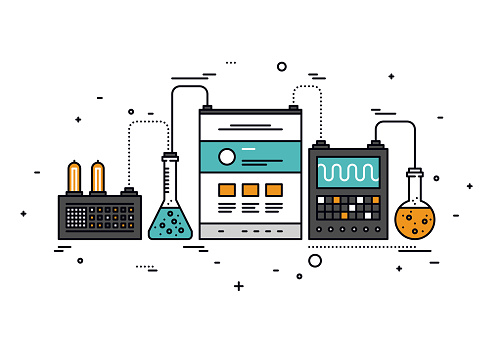
Is your business currently A/B testing? If you are scratching your head because you aren’t, don’t feel bad. Often times, businesses allow their marketing departments to initiate marketing programs without fully digging in to the details. While the strategy built around your marketing plan may seem solid, it is critical that you A/B test in order to explore variables that could dramatically optimize results for your organization.
What is A/B testing?
A/B testing stands for “Always Be Testing”, right? OK, it really doesn’t stand for that but it should. At a very high level, A/B testing (sometimes referred to as split testing) is a way to optimize your communications by testing two different versions of something simultaneously. The “something” could be an email, landing page, website page or banner ad. I give a list of common variables to test later on in this blog.
A more definitive explanation for A/B testing would be that it is a process of comparing a control, version A, against a version with a variable, version B. Always choose a metric to determine success before the experiment.
If you apply this process to the application of a scientific method it would look something like this:
- Evaluate the existing design or content
- Decide what you will test and develop a hypothesis
- Test your hypothesis using A/B testing
- Measure the results
- Analyze and take action on the new information
By testing actual visitors or recipients, you learn which experience a sample of your prospects prefer.
Getting Started
A/B testing doesn’t need to be complicated. In fact, relatively simple and small changes can have profound impacts on your campaigns. It is also important to establish one important rule before getting started: never test more than one variable at a time. While you may be inclined to try a different email subject line and content with version B, doing so will confuse the results and leave you guessing which variable led to the changes in performance.
Let’s take a look at some variables that you can A/B test within your marketing channels.
Email Marketing
- Subject line – Maximize your open rates by testing different subject lines. This could include using more action oriented language in one subject line or placing your brand in the subject line.
- Time of day – Determine your sweet spot for the highest open and click-through rates based on the time of day.
- Day of the week – Find the best day of the week to send emails to your audience.
- Body copy – Try different messaging styles to see what resonates most with your audience.
- Design of email – Introduce different layouts to see if your audience reacts more positively to one over the other. Banner image or no banner image? Call-to-action (CTA) button or plain text link?
- CTA – Test different CTAs to see which ones receive the greatest response. Is someone more likely to take advantage of a free white paper or a free demo? Try using difference colors for the CTA button, but make sure to stay consistent with your brand.
Landing Pages
- Personalization – Find out how personalizing the page affects activity. Leverage the information you already know about your website visitors in an effort to present the most relevant information possible.
- Images – Use images or no images and look for changes in the metrics you are measuring.
- Colors – Experiment with the colors of your CTA or links.
- Layout – Test the placement of elements like forms and CTAs and look for audience preferences.
- CTA – Monitor conversion rates of different CTA variables such as placement above or below the fold, colors or different wording. The conversion rate can provide additional insight in to visitor motivations.
Website
- Colors – Evaluate different colors schemes and audience feedback: Do bold pops of color or subtle accents appeal to your audience more?
- Layout – Try different page styles to see if users gravitate to and interact more with one or the other.
- Content – Experiment with content types to see if your audience prefers white papers, articles, blogs, case studies, webcasts, or whatever else you might wish to offer.
- Conversion form length – Find whether your audience is willing to give you more or less information on forms to access content.
- CTA buttons – Test buttons such as “Download Now”, “Learn More” and “Contact Us”.
Social Media
- Updates – Play with different status updates to see what drives more traffic to your website.
- Images – See which images lead to more engagement with your audience.
- CTA – Determine which CTAs have a stronger connection to the audience.
What does it all mean?
You won’t be successful by accident. Success with A/B testing requires dedication and commitment to not only experimentation but also iteration.
As long as you continue the testing process, you are mitigating potential campaign blind spots. There will always be small steps you can take, tiny variables to change, that will affect the performance of your marketing channels. The beauty of A/B testing is that your audience will always provide you with the best information.
Interested in learning more about A/B testing strategies? Contact Launch Marketing today! Be sure to follow us on Twitter and like us on Facebook to keep up with the latest B2B marketing tips and trends.
There are no comments